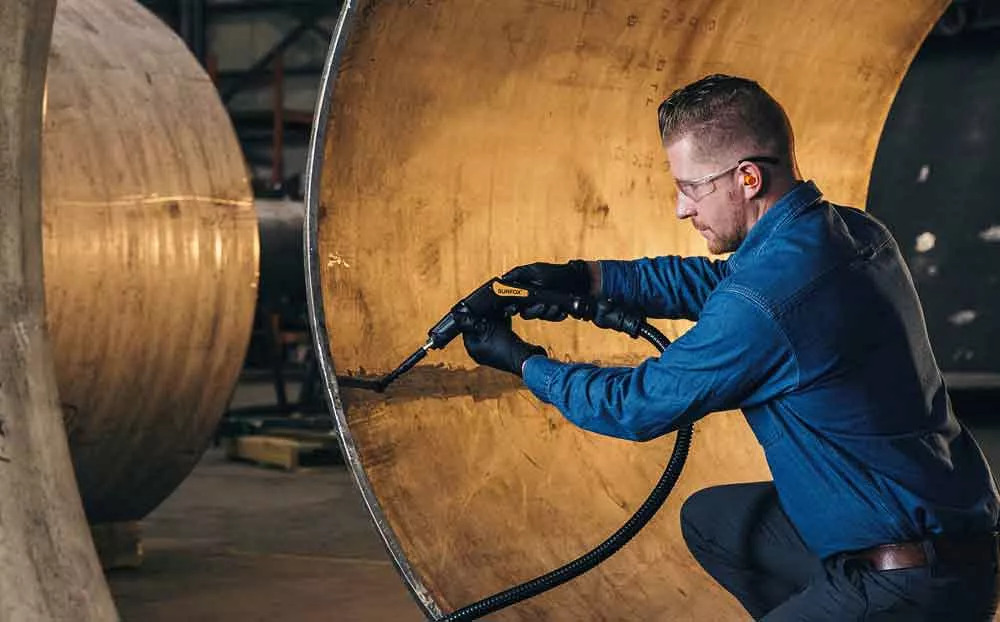Imagine a fabricator lands a contract involving critical stainless steel fabrication. Sheet metal and tubular sections flow through cutting, bending, and welding, then land at the finishing station. The part consists of a plate welded vertically to a tube. The weld looks OK, but it’s not the stack-of-dimes perfection the customer is looking for. So the grinder spends time removing a bit more weld metal than usual. Then, alas, some significant bluing emerges on the surface—a telltale sign of excessive heat input. In this case this means the part won’t meet customer requirements.
Usually performed manually, grinding and finishing require dexterity and finesse. Mistakes in finishing can be extraordinarily expensive, considering all the value that’s already been put into the workpiece. Add an expensive, heat-sensitive material like stainless steel, and costs for rework and scrap mount even more. Add complications like contamination and passivation failure, and a once profitable stainless steel job can become a money-losing, even reputation-losing misadventure.
How can fabricators prevent all this? They can start by developing a knowledge of grinding and finishing, what role each plays, and how each affects a stainless steel workpiece.
Grinding Versus Finishing
They aren’t synonymous. In fact, each has a fundamentally different goal. Grinding removes material like burrs and excess weld metal, while finishing puts a finish on the metal surface. The confusion is understandable, considering those grinding with a large-grit wheel remove a lot of metal quickly and in so doing leave a “finish” of very deep scratches. But in grinding, scratches are just the aftereffect; quick material removal is the goal, especially when working with heat-sensitive metal like stainless steel.
CS Unitec – Metalworking Solutions
Finishing occurs in steps as the operator starts with a larger grit and steps down to finer-grit sanding discs, nonwoven abrasive, and perhaps a felt cloth and polishing paste to achieve a mirror finish. The goal is to achieve a certain final finish (scratch pattern). And each step (finer grit) removes the deeper scratches from the previous step and replaces them with smaller scratches.
Because grinding and finishing have different goals, they often do not complement one another and, with the wrong consumable strategy, actually can work against each other. To remove excess weld metal an operator uses a grinding wheel and leaves very deep scratches, then passes the part on to a finisher who now must spend a lot of time removing those deep scratches. This sequence, moving from grinding to finishing, might still be the most effective way to meet a customer’s finishing requirements. But again, they’re not complementary processes.
Quite often workpiece surfaces designed with manufacturability in mind do not require both grinding and finishing. Parts that undergo only grinding do so because grinding is the fastest way to remove a weld or other material, and the deep scratches left by the grinding wheel fall well within customer requirements. Parts that require only finishing are fabricated in such a way that they don’t require excessive amounts of material removal. A prime example is a stainless part with a good-looking gas tungsten arc weld that only needs to be blended and matched to the base material’s finish pattern.
Read more: A road map for grinding and finishing stainless steel





